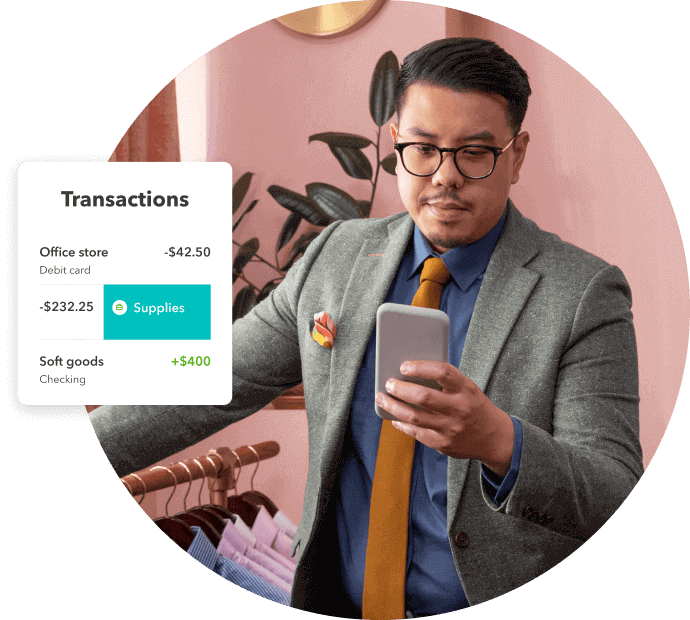You’re self-employed, so you’re carrying a lot of responsibilities, including tracking and reporting your income and expenses accurately. These activities are crucial to continuing your business success and staying on the good side of the Canada Revenue Agency (CRA). When you need to prove income while you’re self-employed, it’s easier to generate the necessary documentation from accurate information.
How to Prove Income When Self-Employed in Canada
How to Prove Income When Self-Employed Versus as an Employee
Whether you’re applying for a home mortgage, a small business office lease, a motor vehicle loan, or a government benefit or subsidy, you may need to prove your income. If you were a company employee before leaping to self-employment, or if you have employees on your payroll, you know it’s easy for workers earning wages and salaries to prove their incomes. Documents constituting valid evidence of income for employees include:
- T-4 slips
- Pay stubs
- A copy of your federal income tax return
- A proof of income statement, called an “Option C print”, from the CRA
An Option C print document is a simple generic version of your tax assessment that summarizes your income and deductions for a specified tax year.
As a self-employed person, if you’ve been keeping good books and records while filing your income tax returns completely and on time, you can produce a copy of your income tax return and request an Option C print to prove your income. But now that you’re a sole proprietor, entrepreneur, or freelancer, you should prepare for the possibility that private investors, lenders, representatives of financial institutions, and governments may not view those income-proving documents the way they would if you were earning wages or a salary. You may need additional evidence and paperwork to verify your true income for them.
Where Should You Start to Prove Income When Self-Employed?
You may wonder if your income tax returns matter, considering they’re not enough proof of your self-employment income. The answer is, of course, they matter. You’re responsible for reporting your income to the CRA, and you want to avoid committing possible tax violations. Making sure you understand the income tax return filing rules and timing requirements ensures smooth sailing at tax time and when you’re proving your self-employment income. Establishing your income accurately starts with submitting complete and accurate income tax returns. The CRA self-employment income Guide T4002 (Self-Employed Business, Professional, Commission, Farming, and Fishing Income) provides the tax information you need for all types of self-employment.
As a self-employed sole proprietor, you pay federal taxes by reporting your income or loss on a T1 income tax and benefit return with the CRA. Generally, if you set aside at least 25% of your net income for taxes, you’re in the right ballpark. The CRA bases your tax liability on your net income, which you calculate by taking your gross income and subtracting your expenses. You report your business income on Line 104 of your tax return (Other employment income). You also need to complete Form T2125 (Statement of Business or Professional Activities), which covers your income and expenses. As of 2018, if you’re paying more than $3,000 a year in taxes, you need to file quarterly tax returns with the CRA.
Keeping Track of Self-Employed Tax Deductions and Expenses Easily
You’re busy running your business, and if you’re a single-person operation, you need help keeping track of your income and expenses. What you spend is as important as what you take in, because those expenses generate self-employed tax deductions. Deductions help lower your tax bill, enabling you to keep more money in your business and your bank account. That means you want to find the best way to manage your taxes throughout the year.
Living in this high-tech age as a self-employed businessperson means you don’t have to hold onto the old pen, paper, and file folder way of tracking data and saving your business paperwork. Smartphones, tablets, cloud-based computer software, and mobile apps simplify billing and record-keeping for you and other freelancers, entrepreneurs, and sole proprietors.
Creators of products including QuickBooks Self-Employed recognize the challenges you face as a self-employed individual, so they give you the ability to do business on the go and maintain the documentation you need. Issuing invoices, sending receipts, and getting paid happens with just a few taps or clicks on your Android or iOS devices, no matter where you are. You save valuable time on administrative duties, such as putting your paperwork in order and generating reports. And you have the information necessary to maximize your self-employed tax deductions and help prove your self-employment income in Canada.
More Documentation to Prove Self-Employment Income in Canada
Remember that list of documents employees use to prove their income? When you’re pulling together your packet to present to a mortgage lender or loan officer, it’s likely you need something more because you’re self-employed. That’s because lending standards are tougher for people who are self-employed. Say you’re applying for a home mortgage.
Mortgage brokers say most lenders require at least a two-year track record of earnings, meaning two years of tax returns. While requirements vary depending on the lender and the mortgage product, you may have to provide financial statements prepared by a CPA, Notices of Assessment, and T1 and/or T2 Generals in addition to your tax returns.
How Taking Self-Employed Tax Deductions Can Work Against You
Conventional wisdom says as a self-employed person, you should write off expenses and take self-employed tax deductions to reduce your net income at tax time. But when you’re trying to get a home mortgage, the traditional strategy works against you with the loan underwriters. How does that happen?
Go back to net income, the amount of money left after you subtract your expenses from your gross income. Like the CRA uses net income to calculate how much tax you owe, mortgage underwriters use net income when calculating your debt-to-income ratio. A debt-to-income ratio measures how much of your income goes to paying your debts. So the more expenses you’re subtracting, the lower your net income.
That’s good for your tax bill, but for your debt-to-income ratio, well, it might not be so good. These self-employed expense deductions can make your ratio higher than the limits for the loan. Generally, lenders like seeing ratios of about 35 to 44% debt compared to income, although other factors can come into play to change that in special cases. However, there are ways to position yourself to prove income when self-employed so you’re able to obtain the loan you want.
Setting the Stage to Prove Self-Employment Income
Before applying for a major loan or approaching a situation that requires you to prove your self-employment income, you should talk to your accountant and tax advisor. They can help plan an effective financial strategy and prepare the documents you need to put your circumstances in the best light. If you know a year or two in advance that you’re going to apply for a big loan or seek funding that calls for proof of self-employment income, you might want to claim fewer expense deductions. That way, your debt-to-income ratio falls within the range your lender wants to see.
If you don’t have the luxury of advance planning, try to provide information that shows your gross income and ability to carry additional debt. Bank statements and contracts for future business can demonstrate an increase in your gross income, and new reliable revenue streams are useful as well. Having a relationship with a lender who focuses on doing business with sole proprietorships and small business owners, and an underwriter who knows your industry and your business, also help. They can make adjustments to compensate for large expense deductions, such as depreciation or one-time deductions for large purchases that affect your ratio, putting you in a better position to show your true financial strength on paper.
Proving your self-employment income takes accurate tax returns, which start with good record-keeping. Using today’s technology empowers you to get those important administrative tasks done efficiently. The QuickBooks Self-Employed app helps freelancers, contractors, and sole proprietors like you track and manage your business on the go. Over 5.6 million businesses use QuickBooks, join them today.



